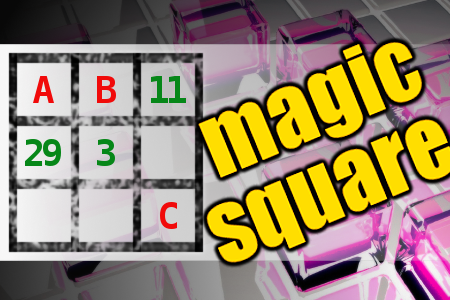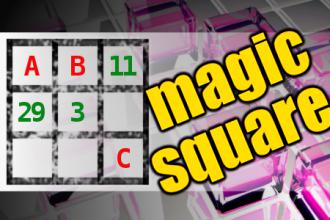MAGIC SQUARE: Calculate A+B-C
The aim is to place the some numbers from the list (3, 6, 11, 21, 24, 29, 42, 48, 54, 58, 61, 66) into the empty squares and squares marked with A, B an C. Sum of each row and column should be equal. All the numbers of the magic square must be different. Find values for A, B, and C. Solution is A+B-C.
Top 10 Reasons to Celebrate Easter
10. You absolutely love the movie, "The Ten Commandments."
9. You look really, really good in yellow.
8. You just went on a low cholesterol diet and didn't want to waste all those eggs in the fridge.
7. You figure any Holiday that starts with a "Good Friday" can't be all bad.
6. You love to bite the heads off chocolate bunnies.
5. It's a good time to check out your neighborhood church and not be noticed.
4. You have this bunny suit you love to wear, but are too insecure to wear it without a reason.
3. Even though you don't know what it is, you really like the sound of going to a "Passion Play."
2. You figured since Jesus went to all THAT trouble to make it to the first Easter, you'd give it a shot.
1. As a Christian you celebrate the resurrection every other day, why not Easter too?
From EasterHumor.com

